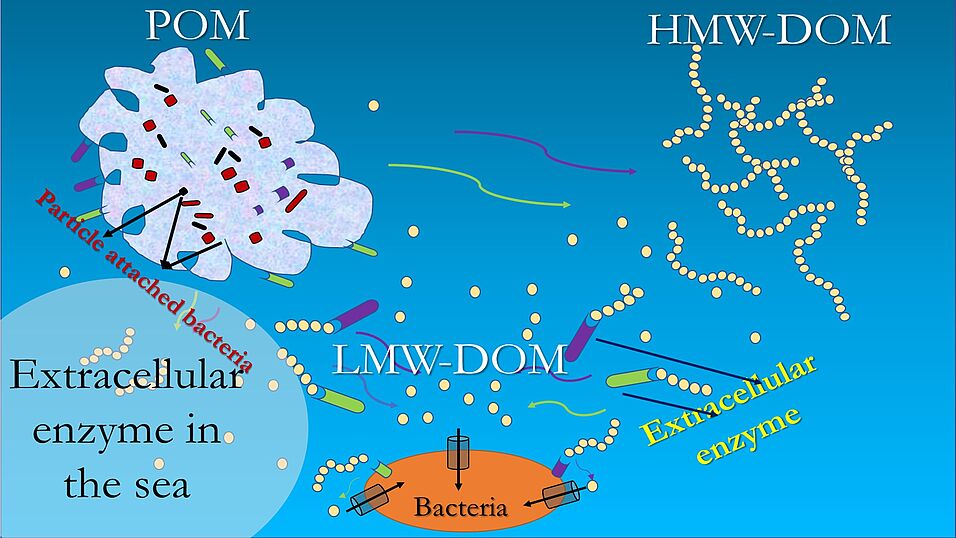Heterotrophic prokaryotes are the only consumers of the large pool of dissolved organic matter in the ocean utilizing extracellular enzymes to cleave large organic molecules prior to be able to take up the cleaved organic solutes. In the deep ocean, however, dissolved organic matter is old with a radiocarbon age of about 5000 years which has been interpreted as an indication of the apparent recalcitrance of this pool of organic matter. Given the diluted and highly diverse organic molecules present in the deep ocean, heterotrophic prokaryotes should maintain their extracellular enzymes attached to the cell wall. However, measurements with fluorescence substrate analogs indicated that the majority of the extracellular enzymes in the deep ocean are freely dissolved, which contrast predictions formulated in the foraging theory, which predicts that dissolved extracellular enzymes are advantageous only in diffusion-limited systems, such as a gut environment.
We addressed this enigma of the high contribution of dissolved extracellular enzymes to the total extracellular enzyme pool of CAZymes and peptidases, cleaving the two most important macromolecules in the organisms, carbohydrates and proteins, by using this multi-omics approach throughout the oceanic water column. We could determine for the first time ever, the distribution and diversity of total versus dissolved CAZymes and peptidases and link them to the respective prokaryotic producers. We found a major increase in the fraction of dissolved CAZymes and peptidases with depth in the oceanic water column accompanied by shifts in the prokaryotes producing these extracellular enzymes. Our approach resulted in an unsurpassed resolution of the distribution of the different extracellular enzyme pools and their producers through the water column on a global scale. Based on these results and according to the foraging theory we conclude that the dominance of dissolved extracellular enzymes in the waters below 1000m depth indicates that most of the prokaryotes are associated to marine snow-type particles consistent with recent findings that the number of marine snow particles remains remarkably stable throughout the water column.
“Linking extracellular enzymes to phylogeny indicates a predominantly particle-associated lifestyle of deep-sea prokaryotes”
By Zihao Zhao, Federico Baltar, Gerhard J. Herndl
Science Advances15 Apr 2020 : Eaaz4354

